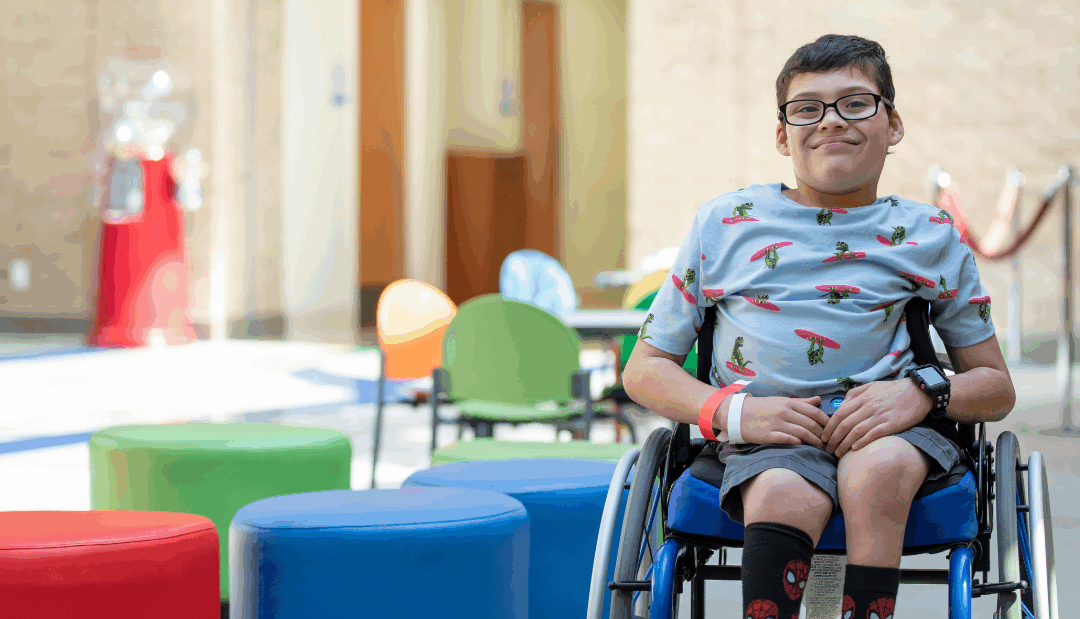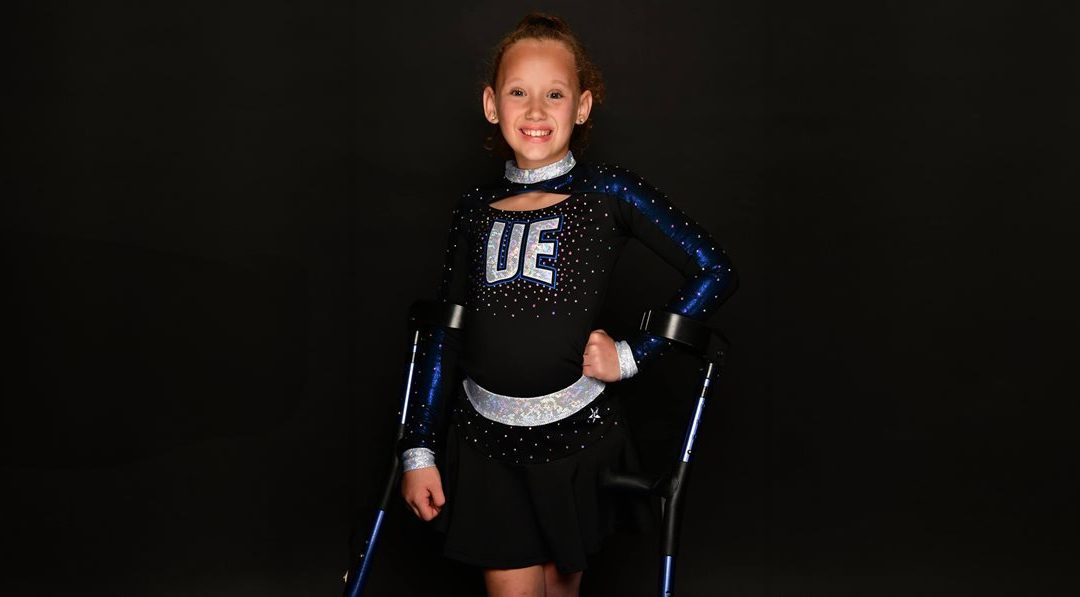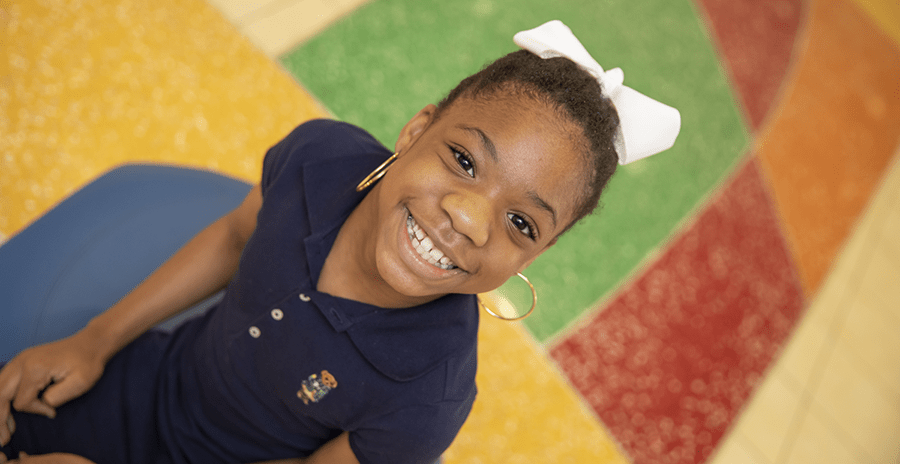
Five Common Questions About Spina Bifida
We understand that learning your child has spina bifida can lead to many questions. However, families do not have to handle this journey alone.
At Scottish Rite for Children, a large team of doctors and medical experts are ready to treat children with spina bifida. Scottish Rite’s Spina Bifida Clinic offers a team approach that gives families a plan for each stage of their child’s life. Together, our Spina Bifida team will help every child with spina bifida reach their full potential.
1) What is spina bifida?
The term “spina bifida” means “split spine.” Spina bifida is a condition that occurs when a baby’s neural tube does not close or grow correctly while developing. The neural tube is the part that later becomes the brain and spinal cord. Spina bifida develops during the first month of pregnancy, often before the family knows about the pregnancy.
Spina bifida affects the brain and spinal cord (the central nervous system). It also affects other body systems that work together, like the bowel, bladder, swallowing, growth and skin. Spina bifida presents differently for each child. With the right care, most children with spina bifida will live bright and full lives.
2) What are the different types of spina bifida?
These are the three most common types of spina bifida:
- Myelomeningocele (my-low-muh-NIN-juh-seal): This form of spina bifida is the most complex type. It affects the spine, spinal cord and the tube they are in (the spinal canal). Myelomeningocele happens when a baby is born with a sac filled with fluid that sticks out from an opening in their back. The sac holds part of the spinal cord and nerves. This causes nerve damage and other problems.
- Meningocele (muh-NIN-juh-seal): With this type of spina bifida, a fluid-filled sac pushes through an opening in the spine. This sac contains the covering of the spinal cord, not the nerves. Nerve damage and symptoms may vary. Surgery is usually needed to remove the sac.
- Spina Bifida Occulta (oh-KUL-tuh): “Occulta” means “hidden.” This type of spina bifida causes a small gap in the spine bones (vertebrae). Up to 20% of children with spina bifida have this form, and it usually does not have symptoms. Unlike other types of spina bifida, spina bifida occulta does not affect the nerves.
3) What causes spina bifida, and can it be prevented?
Doctors do not know the exact cause of spina bifida. Researchers think it is caused by a combination of factors, like a family’s genes or food.
Taking folic acid, also called vitamin B9, before pregnancy can lower the risk of a child developing spina bifida. Also, tests during pregnancy (prenatal tests) can help detect spina bifida. Doctors use test results to help families early by providing key information and resources before the baby is born.
4) What are the main health issues for someone with spina bifida?
Spina bifida is a condition that lasts a lifetime and can affect many parts of a child’s health. Some of the main health issues include:
- Bladder and Bowel Control: It is common for children with spina bifida to have problems with their bladder and bowel. This function depends on how well their nerves work. When the nerves that control the bladder and bowel do not work, it is hard for children to control when they go to the restroom. Children with spina bifida will often need help emptying their bladder and bowels, as well as staying dry during the day.
- Mobility: There are many ways for children to move around. Depending on the type of spina bifida, some children can walk with little to no problems. Others may need braces, walkers or wheelchairs. As a child gets older and continues to grow, the way they move around may change.
- Skin: Children with spina bifida often have less feeling in some body parts, like in their feet, legs or back. Because of this, wearing braces or spending long periods of time in a wheelchair can sometimes cause pressure sores. Pressure sores and blisters can turn into deep wounds or infections that are hard to heal. To prevent this issue, caregivers and the child should check the skin for injuries daily, like during bath time.
5) What does lifelong care for spina bifida look like?
Families come to Scottish Rite’s Spina Bifida Clinic at different points in their journey. Children with spina bifida need a team of medical experts who will partner with them to find the best treatment plan for every body part affected.
The care team includes:
- Pediatric Developmental Disabilities (PDD): Medical Director of PDD Christine Murphy, M.D., developmental behavioral pediatrician Shanmuga Pujitha “Puji” Jonnalagadda, M.D., and physician Richard Adams, M.D., are at the forefront of spina bifida care and research. They work alongside advanced practice providers (APPs) to deliver compassionate, family-oriented and evidence-based care.
- Neurosurgery: When a baby with spina bifida is born, evaluations and surgeries start with a neurosurgeon. Neurosurgeons complete the first step of treating spina bifida by closing the open spinal cord. Many babies with spina bifida have hydrocephalus (hy-dro-SEFF-uh-luss). This happens when the fluid around the brain does not drain fast enough. A tube, called a shunt, is placed inside the brain to drain the extra fluid. The shunt relieves the extra pressure that the slow-moving fluid causes. Each year, a neurosurgeon checks on the shunt to make sure it is working properly.
- Urology: Most children have issues with their bladder and bowel. A team of urologists, nurses and dietitians partner with families to create a plan to prevent common kidney complications. This team also helps children and families transition through each stage of urinary and bowel continence and achieve independence in their personal care.
- Orthopedics: Scottish Rite’s pediatric orthopedic surgeons address problems with the muscles and bones, including conditions such as clubfoot, scoliosis and tightness related to the knees, hips or feet. They partner with experts in Orthotics & Prosthetics to create braces (orthoses) for children with this need.
- Therapy Services: The Therapy Services team helps children with spina bifida become more independent.
- Physical therapists provide exercises to help children move efficiently, with the goal of becoming more active and independent.
- Occupational therapists help children develop the skills they need for success with daily activities, like putting on clothes or bathing.
- Therapeutic recreation specialists help families find activities in the community that match their child’s interests and abilities.
Scottish Rite’s Spina Bifida team is committed to providing the best medical care for every child. When your child reaches adulthood, your care team will help them transition from pediatric to adult care, as well.
Getting treatment early, no matter which type of spina bifida your child has, often leads to more successful outcomes. If your child was diagnosed with spina bifida, Scottish Rite for Children’s Spina Bifida program can help. Request an appointment or call the Pediatric Developmental Disabilities department at 214-559-8673 to discuss spina bifida care.









